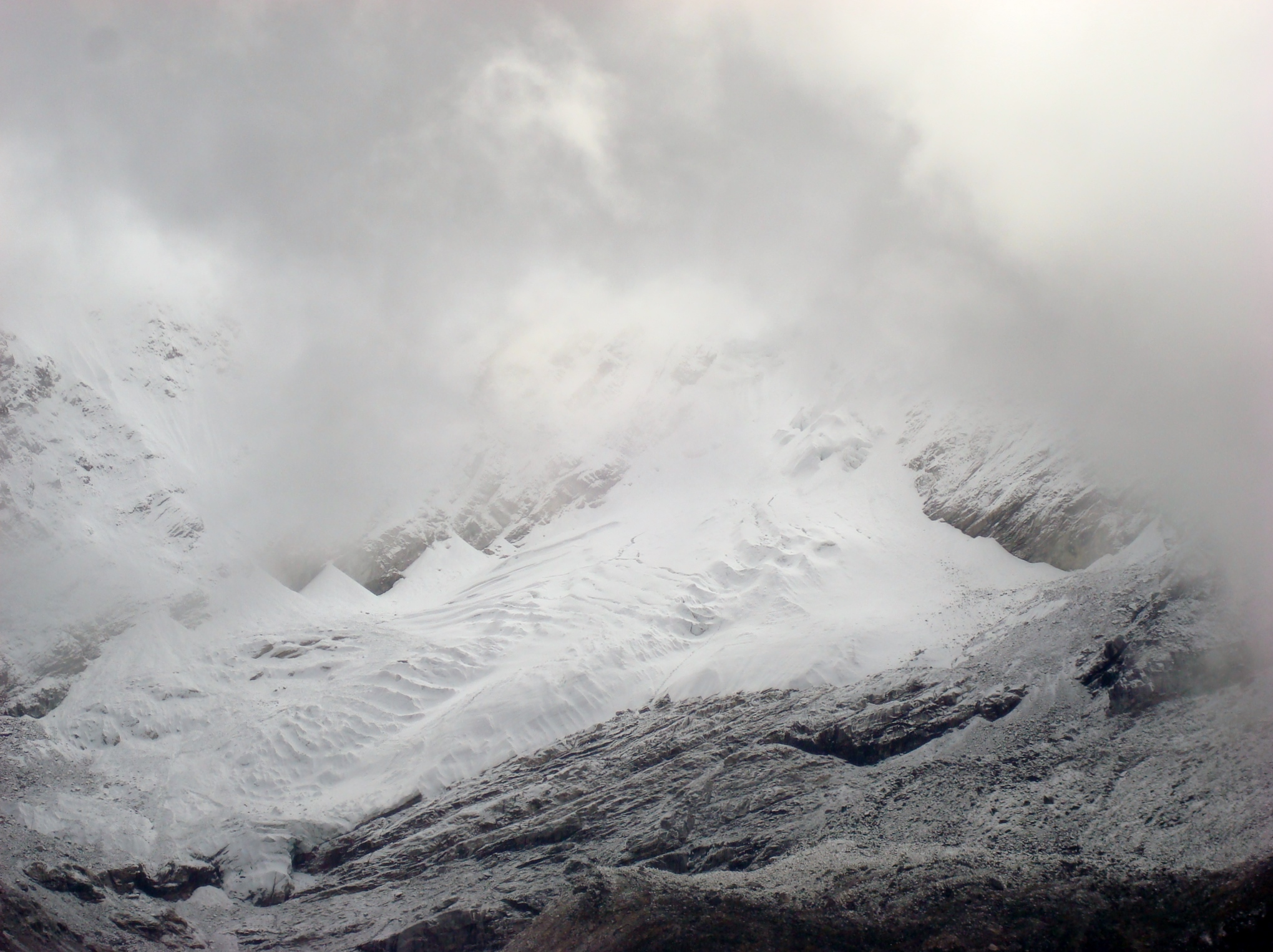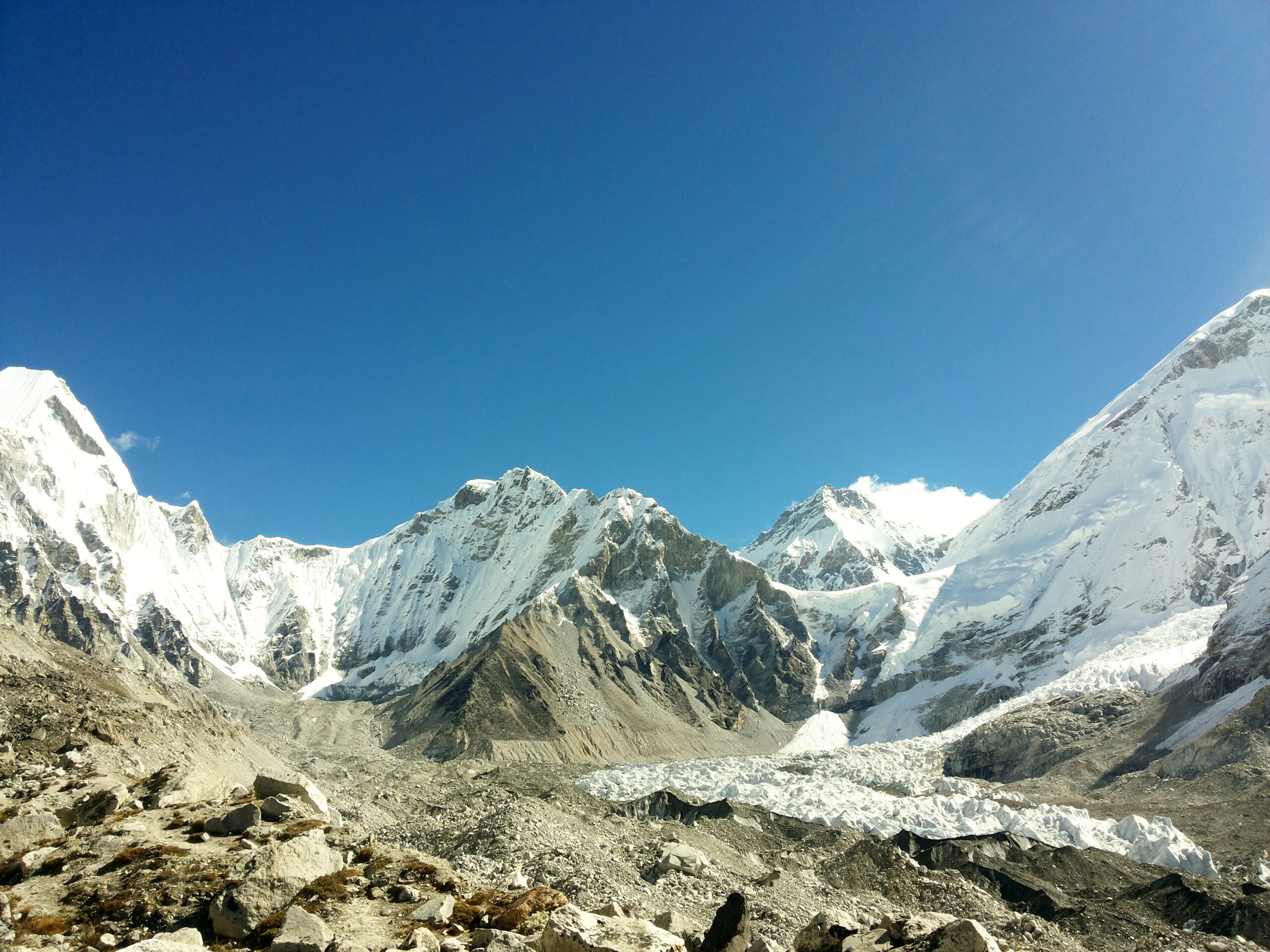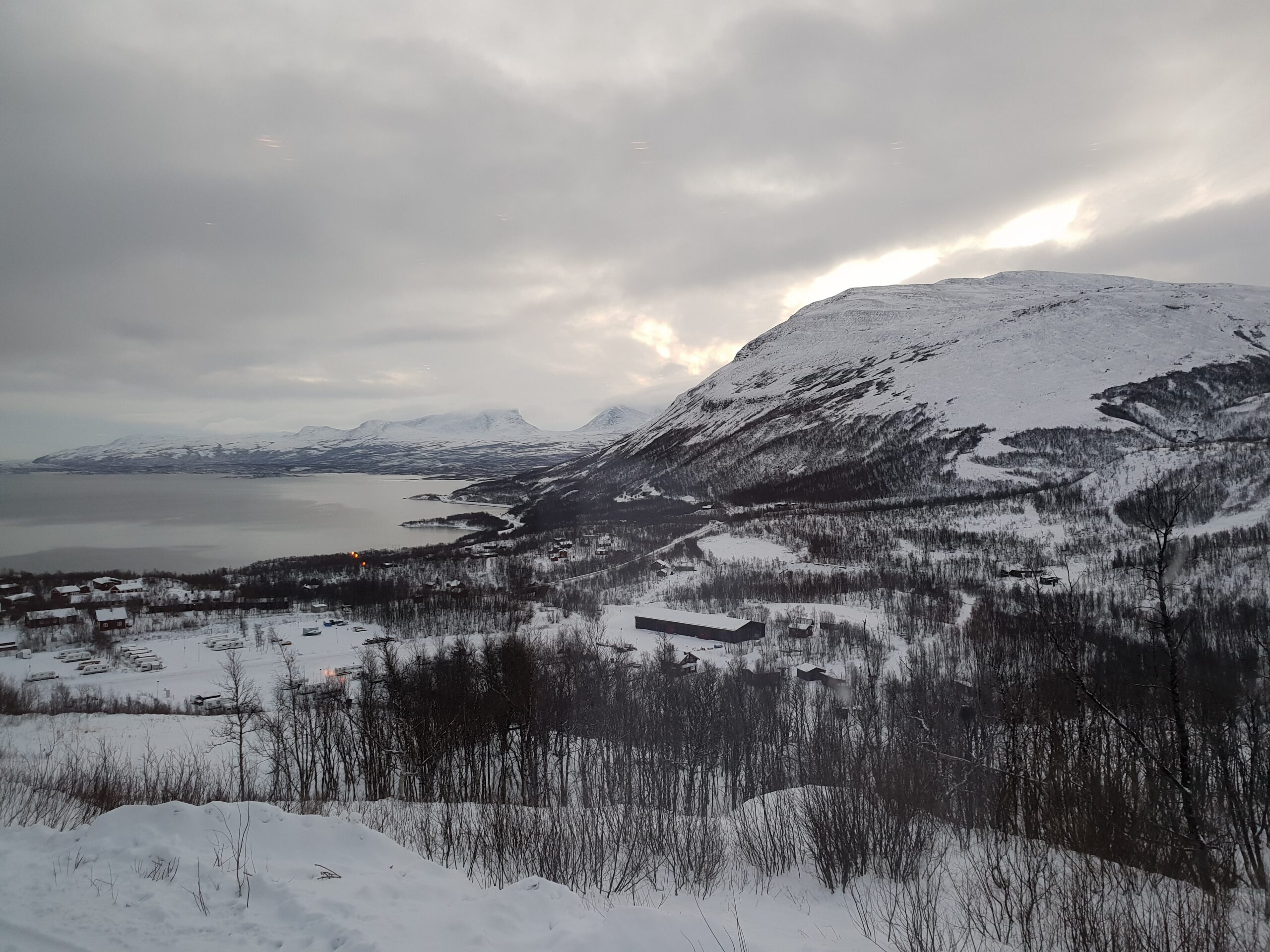I had set the alarm for 5 am in the morning as we needed to start the day early. It was day 9 on our base camp trek and the schedule for today was to trek to Gorakshep. Post lunch, we had planned to head to Everest base camp if the weather continued to be overcast. The next day, we would summit Kalapathar, when the skies are clear, typical of early mornings in this region and get the best views of the Himalayan peaks and Mt. Everest.
Despite the fact I was too tired from the difficult trek to Lobuche and the events of the previous day, I had not slept all that well. I wondered if it was the altitude; I kept waking up several times in the night. It is said that at high altitudes, low oxygen levels affects the sleep center of the brain and often the CO2 sensors in the body transmit a signal to the brain to stop breathing and the oxygen sensors take over when the breathing stops for 10-12 seconds. This often leads to a person waking up several times in the night, though this is not really a symptom of altitude sickness.
In addition, as the tea house did not have power after 8 pm, we had to use our head lamps every time we had to make our way to the common toilets. With all the disturbances, I was up much before the alarm, at 430 am and started getting ready; I was happy to be up that early as there was no queue to use the toilets and no one else around!
I was at the breakfast table at 630 am as planned and had my usual fare of pancakes with honey and milk tea. Everybody looked a tad tired. Our friend with the ankle injury was in a bit of a pain from the long trek the previous day, but was determined to go. Our other friend with the upset stomach wasn’t doing too well either, he was completely out of energy due to multiple visits to the toilet the previous night and didn’t have much of a breakfast; it looked serious! We all decided to plough on and get to Gorakshep. In order to avoid the issues en route to Lobuche, Minmar was to guide our friend with the leg injury at the rear end and Nima was to accompany all 4 of us to Gorakshep.
We started out at 7 am right after breakfast, the terrain was more like the surface of the moon; it was grayish brown with large boulders and rocks! It was cloudy and one could not see all the Himalayan peaks well enough; it was cold for sure, we had our gloves, woolen cap and down jacket on. We walked slowly to help our bodies cope with the lack of oxygen, sipping on water along the way. After about an hour of walking, we found there wasn’t much of a trail left and the pathway was strewn with rocks and boulders.
All of us were beginning to feel tired and were slowing down. One of our friends starting getting a headache and it was getting worse. The first aid often recommended is one paracetamol, one litre of water and an hour long wait for the headache to go away. I was telling her that if the headache does not go away, she would need to return to Lobuche. At that point, she broke down; it was so important to reach Everest base camp that the thought that one might not, hit her hard. I wonder how any of us would have reacted if we were told we had to return back! She decided to take a diamox tablet to ensure the headache disappears if it was due to altitude. It is often said that its best to treat symptoms of altitude sickness with altitude medications as a first step even if the root cause is something else. Our friend with the upset stomach wasn’t doing too well either, he was extremely tired and out of energy. We were hoping our other friend with the ankle injury was going slow and doing fine.
After another hour of walking, the scenery changed dramatically. To our right were large rocks along with gray boulders of ice and then we realized that what we were seeing was the end point of the Khumbu glacier to our right. The Khumbu glacier is a frozen river and the highest glacier in the world, that starts at Mt. Everest and flows down parallel to the Everest base camp trail between Gorakshep and Everest base camp. It moves at a speed of about 120 feet per year. In contrast the Khumbu icefall, closer to Everest base camp, moves at a speed of 3 feet per day.
The conditions of both our group members did not improve. We had all slowed down considerably. One of our other group members was trailing and keeping the group together got challenging. One of the more experienced porters was also giving us company now at the front of the group. I was beginning to feel light headed and tired; I knew it was the altitude and I needed to slow down further and drink more water to hydrate myself. We continued to walk towards Gorakshep and got a glimpse of the tea houses in another hours’ time.
Gorakshep at an altitude of 5164 m is a frozen lake bed covered with sand and is the last point prior to reaching Everest base camp. The name ‘Gorak Shep’ translates to ‘dead ravens’, due to the lack of vegetation of any kind. It was the original Everest base camp used by climbers summiting Mt. Everest several years ago. Later, base camp was moved closer to the mountain, just below the Khumbu ice fall. There are just 3 tea houses in Gorakshep and in the climbing season, these are full.
From Gorakshep, one can summit Kalapathar (5550 m), which is the highest one can reach without a mountaineering permit. Typically, it takes about 4 hours to summit Kalapathar and return and most people start the climb early in the morning as it offers the best views of Mt. Everest and other Himalayan peaks. From Gorakshep, Everest base camp takes about 1.5 to 2 hours.
We reached Gorakshep by about 11 am. The dining area of our tea house was buzzing with activity but we could still find individual rooms for each of us. The accommodation was very basic and the toilets were common. All of us were extremely tired. Everyone except one member of our group had some issue or the other. I was feeling very tired and sleepy to the point of falling asleep in the dining area! We were told it might be a good idea to stay in the dining area rather than go back to the room. Enroute, our friend with the upset stomach, had to take a diamox as was struggling from dehydration which worsened the effects of the high altitude. He was definitely one of the fittest in our group and we were surprised to see him struggle. As soon as we reached Gorakshep, my friend with the headache took additional medication for sinus just to be doubly sure. We all knew we were struggling to cope with altitude and it was hitting us hard. We were wondering if an additional rest day would have helped. I eventually took a tablet of diamox as well as I could not keep myself awake; it was a very strange situation for me as I was not having a headache or any other typical symptoms of altitude sickness; just extreme fatigue and sleepiness.
All of us were drinking tea and waiting for lunch. The lunch arrived but I just picked on the food; I had no appetite. My friend with the upset stomach did not have any lunch; he had missed 2 meals by now and we were worried. None of us manage to finish our lunch. We knew we could not walk to Everest base camp in the condition we were in; if we ever wanted to get there, we had a better chance tomorrow. It was obvious Kalapathar was out of question; but one of our group members decided to give it a shot with Minmar as guide and the rest of us stayed back in the dining area. It was very cold and we were hoping for some sun shine. I had more tea and lots of water and hoped things would get better. The 4 of us sat there and tried to shake off the altitude sickness that had hit us, all along hoping we would make it to base camp tomorrow. After what seemed like a very long time, it was possibly about 4 pm, I felt a tad better. Our friend with the upset stomach was lying down in the dining area and his condition was not improving despite medications and oral rehydration salts. Our other two friends were also showing some signs of improvement.
By about 6 pm, our friend who had attempted Kalapathar returned after a successful attempt at the peak; we were very happy for him. It was extremely cold now and we were drinking more hot tea and hoping the heating in the dining area would be switched on. By now, I was completely fine. The diamox and the rehydration had helped immensely. I had a simple dinner of garlic soup and Dal bhat. With this four of us were in reasonable shape to attempt base camp the next day but it seemed like the condition of our group member with the upset stomach was not improving at all. He had missed dinner too; with that he had not had any solid food since morning! He decided he would not go ahead to base camp but instead return to Lobuche the next morning. It was a tough call but he was at peace with it.











Leave a Reply